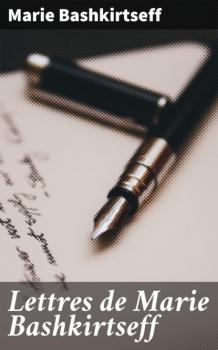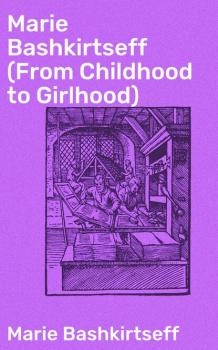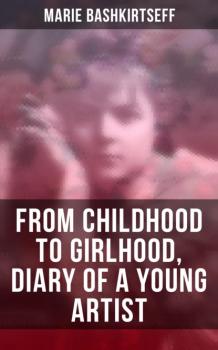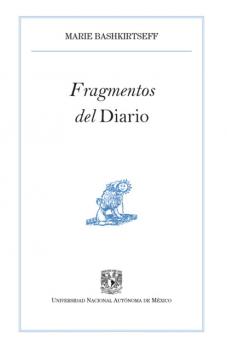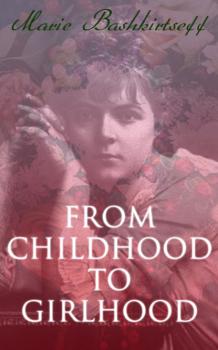Marie Bashkirtseff
Список книг автора Marie BashkirtseffLettres de Marie Bashkirtseff
"Lettres de Marie Bashkirtseff", de Marie Bashkirtseff. Publié par Good Press. Good Press publie un large éventail d'ouvrages, où sont inclus tous les genres littéraires. Les choix éditoriaux des éditions Good Press ne se limitent pas aux grands classiques, à la fiction et à la non-fiction littéraire. Ils englobent également les trésors, oubliés ou à découvrir, de la littérature mondiale. Nous publions les livres qu'il faut avoir lu. Chaque ouvrage publié par Good Press a été édité et mis en forme avec soin, afin d'optimiser le confort de lecture, sur liseuse ou tablette. Notre mission est d'élaborer des e-books faciles à utiliser, accessibles au plus grand nombre, dans un format numérique de qualité supérieure.
Marie Bashkirtseff: From Childhood to Girlhood, Diary of a Young Artist
Marie Bashkirtseff's diary was first published in 1887, and was only the second diary by a woman published in France till that date. It was an immediate success. British Prime Minister William Gladstone referred to her diary as «a book without a parallel», and another early admirer was George Bernard Shaw. Her diary was cited as an inspiration by the American writer Mary MacLane, whose own shockingly confessional diary was written a bare generation later, and it was mentioned as a model by later writers who became known for their diaries, including Pierre Louÿs, Katherine Mansfield, and Anais Nin. Bashkirtseff's diary has been called «a strikingly modern psychological self-portrait of a young, gifted mind,» and her urgent prose, which occasionally breaks out into dialogue, remains extremely readable. She was multilingual and despite her self-involvement, was a keen observer with an acute ear for hypocrisy, so that her diary also offers a near-novelistic account of the late nineteenth century European bourgeoisie. A consistent theme throughout her journal is her deep desire to achieve fame, inflected by her increasing fear that her intermittent illnesses might turn out to be tuberculosis.
Fragmentos del diario
El Diario se publicó por primera vez póstumamente, en versión resumida, en 1887, fue un éxito de ventas e inmediatamente se tradujo a varias lenguas. En América latina la admiraron Rubén Darío, Amado Nervo, Victoria Ocampo. José Asunción Silva la recrea en su novela De sobremesa. Marina Tsvetaeva se inspira en el Diario de Marie para escribir sus Cuadernos. También la leen Katherine Mansfield, Anaïs Nin y Simone de Beauvoir. Teodoro Adorno la llamó «La santa patrona del fin de siglo». En 1964 fueron encontrados en la Biblioteca los manuscritos completos del diario de Marie. La escritora Colette Cosnier, «biógrafa de las mujeres olvidadas», se encerró en la Biblioteca Nacional hasta leer las 19,000 páginas de los manuscritos y publicó en 1985 una biografía de Marie Bashkirtseff, Un retrato sin retoques. Los fragmentos del Diario que presentamos fueron seleccionados y traducidos por María Teresa Priego, que también nos regala un entrañable prólogo en el que deja claro la influencia que tuvo, y tiene, en la cultura moderna esta extraordinaria artista.
From Childhood to Girlhood
Marie Bashkirtseff's diary was first published in 1887, and was only the second diary by a woman published in France till that date. It was an immediate success. British Prime Minister William Gladstone referred to her diary as «a book without a parallel», and another early admirer was George Bernard Shaw. Her diary was cited as an inspiration by the American writer Mary MacLane, whose own shockingly confessional diary was written a bare generation later, and it was mentioned as a model by later writers who became known for their diaries, including Pierre Louÿs, Katherine Mansfield, and Anais Nin. Bashkirtseff's diary has been called «a strikingly modern psychological self-portrait of a young, gifted mind,» and her urgent prose, which occasionally breaks out into dialogue, remains extremely readable. She was multilingual and despite her self-involvement, was a keen observer with an acute ear for hypocrisy, so that her diary also offers a near-novelistic account of the late nineteenth century European bourgeoisie. A consistent theme throughout her journal is her deep desire to achieve fame, inflected by her increasing fear that her intermittent illnesses might turn out to be tuberculosis.
